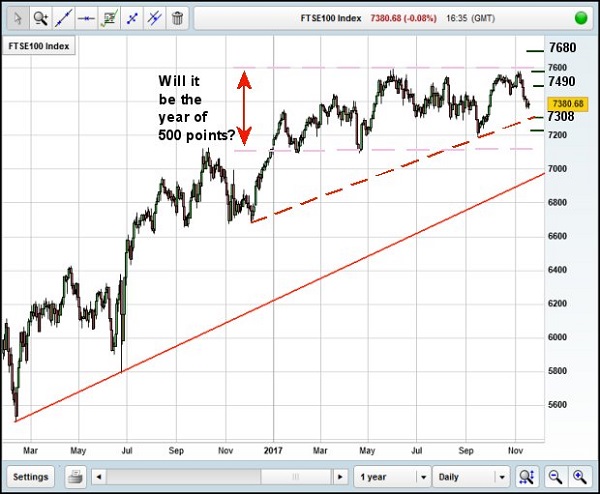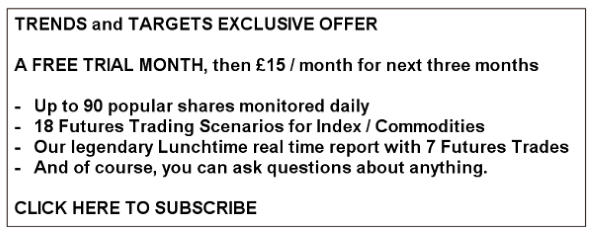Something worrying about the FTSE 100
20th November 2017 09:13
this week the market is really starting to bother us. On Friday, for instance, we'd mentioned our concern of any rise above 7,389 fading out half way to target. At precisely two minutes past noon, this actually happened with a five-point drop. It suggested our optimism was based on a fake!
Similarly, we're increasingly worried at the number of shares not requiring updated in our daily scan of the 80-plus most popular UK stocks.
In an ideal world, the market shows a reasonable pulse with between 20% and 30% of shares requiring an update due to targets being met, RNS's released which change circumstances, or simply trigger levels being hit.
In recent weeks, it's often been the case of just 10% needing a revamp of our calculations and experience teaches us we should be concerned.
We often write about the "if it ain't going up" situation, along with the similar "if it ain't going down" contrary view. If something isn't moving in the expected direction, expect a sharp move in the opposite direction.
This makes some sense. But...
The FTSE should have reached around the 7,300 level and bounced, but it ain't going down. Whereas, rather a few shares should be going up, but stubbornly refuse to perform.
This sort of nonsense is expected during July/August, not at a time of the year where some vibrancy makes sense. If the UK market were a share, we'd suggest it's marching on the spot while awaiting a major news report.
A glance at the chart below lends voice to our frustration, showing a FTSE effectively rangebound since May. Which, given our beloved Prime Minister's surname, is apt.
We're going to stick our neck out and suggest, should the FTSE now manage to actually close a session above 7,560, growth to an initial 7,680 makes a lot of sense initially. Secondary, if bettered, comes along at 7,890 points.
As the market closed Friday at 7,380, this sounds like a fairy tale, but it's one which may prove useful as it tells us to look for reasons which may permit the FTSE above the trigger level.
If we review the immediate situation, trades now above 7,407 points should prove capable of meagre movement toward 7,432 points. Secondary, if bettered, calculates at 7,490 points. This takes the index within sniffing distance of our all important trigger level.
Of course, what happens if 7,308 breaks? A chasm in the festive snow with 7,220 as bottom makes some sense, but this risks breaking the 2017 uptrend, really not a good note on which to end the year. It implies the "ultimate" destination will probably be around 7,100, confirming the UK market as experiencing a pretty pointless year with a 500-point range.
Perhaps, unlike Bitcoin, the FTSE is actually behaving with a degree of sanity when one factors in "the Brexit thing" along with other real world factors.


Alistair Strang has led high-profile and "top secret" software projects since the late 1970s and won the original John Logie Baird Award for inventors and innovators. After the financial crash, he wanted to know "how it worked" with a view to mimicking existing trading formulas and predicting what was coming next. His results speak for themselves as he continually refines the methodology.
Alistair Strang is a freelance contributor and not a direct employee of Interactive Investor. All correspondence is with Alistair Strang, who for these purposes is deemed a third-party supplier. Buying, selling and investing in shares is not without risk. Market and company movement will affect your performance and you may get back less than you invest. Neither Alistair Strang, Shareprice, or Interactive Investor will be responsible for any losses that may be incurred as a result of following a trading idea.
This article is for information and discussion purposes only and does not form a recommendation to invest or otherwise. The value of an investment may fall. The investments referred to in this article may not be suitable for all investors, and if in doubt, an investor should seek advice from a qualified investment adviser.
Editor's Picks